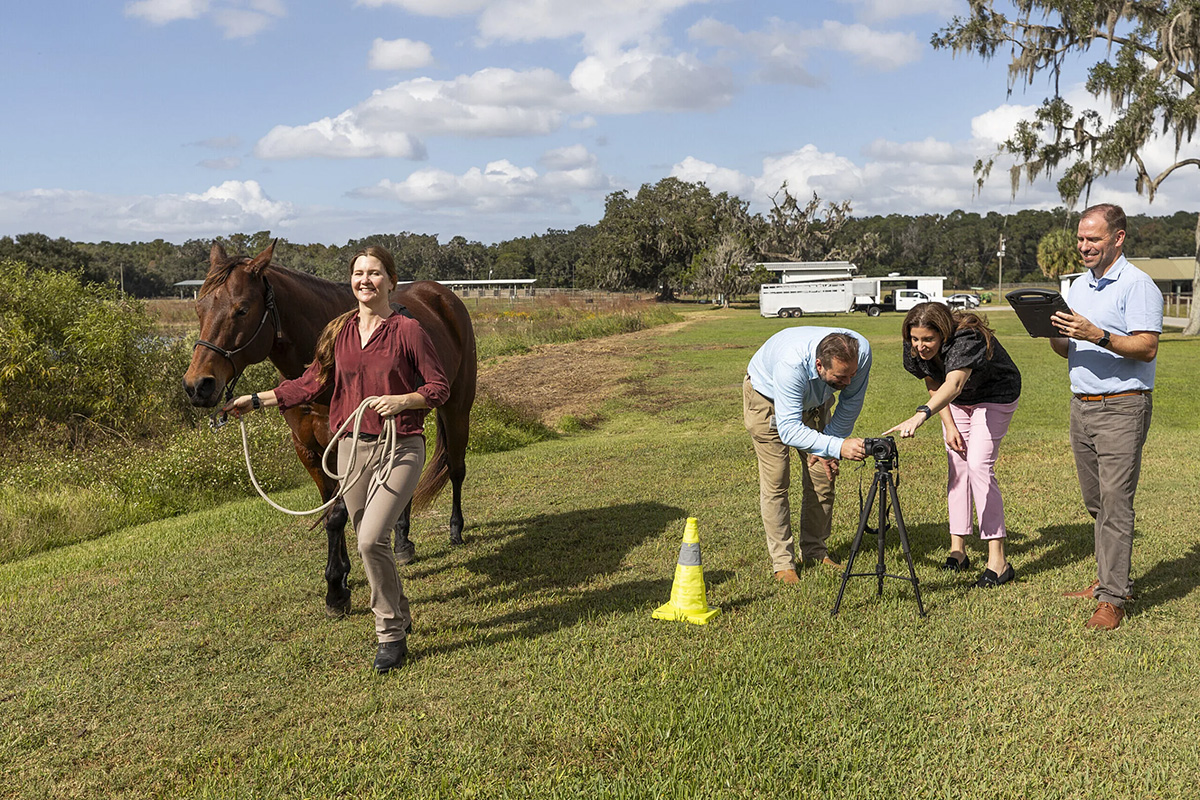GAINESVILLE, Fla. — A horse, a scientist, an engineer, and a physiologist walk into a doctor’s office.
At first, it sounds like the setup of a good joke. But the four co-investigators spearheading a National Institutes of Health grant to the tune of $5.4 million each bring a unique position of expertise to the question of osteoarthritis pain — and its progression not only in people, but in horses.
Like humans, horses with osteoarthritis exhibit a yearslong progression of the disease with varying types of pain, much like the different types and levels of pain reported by humans with osteoarthritis. Additionally, their joints are more similar to ours than, say, a rodent’s, one of the most common models used for osteoarthritis research.
Consequently, researchers from the UF colleges of Veterinary Medicine, Dentistry and Engineering as well as the UF Institute of Food and Agricultural Sciences are teaming up as co-investigators to better understand how the level of pain felt by patients — both equine and not — relates to the level of joint degeneration present in osteoarthritis.
“Ultimately, we’re trying to study pain in horses, and work out how that might translate to a better understanding of pain in people,” said Adam Biedrzycki, BVSc, Ph.D., an associate professor of large animal surgery.
The team wants to better understand how animals sense pain, and then devise a way to apply those measures to humans as closely as possible, said Kyle D. Allen, Ph.D., a professor of biomedical engineering. If they can learn to measure pain in horses like clinicians measure pain in humans, and replicate as many of those measures as possible, they’ll be able to drill down into a reliable characterization of what chronic pain can look like.
“It’s not just, ‘Ouch, that hurts,’ Allen said. “It’s measured in so many different variables … how we move, why we move, how we sense temperature, how we sense position, how we sense pressure, all these things change.”
The study, called GALLOP (Gait, Activity and Locomotion Links to Osteoarthritic Pain) aims to test pain-related behavioral measurements in horses. The researchers will work to understand how horses perceive pain and assess how it impacts their mobility, with a goal of closing the gaps between pain assessments in horses and humans.
Pain manifests uniquely between individuals and horses, impacting everything from sleep and anxiety to cognition — and we all feel it differently, said neuroscientist Yenisel Cruz-Almeida, MSPH, Ph.D., associate director of the UF Pain Research and Intervention Center of Excellence and an associate professor in the UF College of Dentistry. The project could ultimately help create pain-relieving therapies that benefit both humans and animals.
Notably, the project is the first time a comprehensive quantitative sensory testing assessment — often used to study pain in humans — will be applied to horses in this context, Cruz-Almeida said.
And, while each of the researchers brings their own valuable skills to the table, they’re aligned in the project’s common goal.
“Whether we are looking at an equine patient or a human patient, we’re always striving to do a better job of safely relieving pain and discomfort,” said Samantha Brooks, Ph.D., an associate professor of equine physiology. “And if existing models of pain aren’t working, then it’s time we look at new strategies like getting a little help from our local horse population.”
